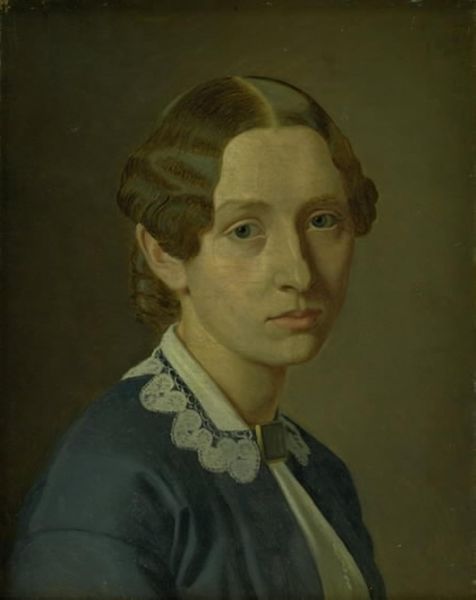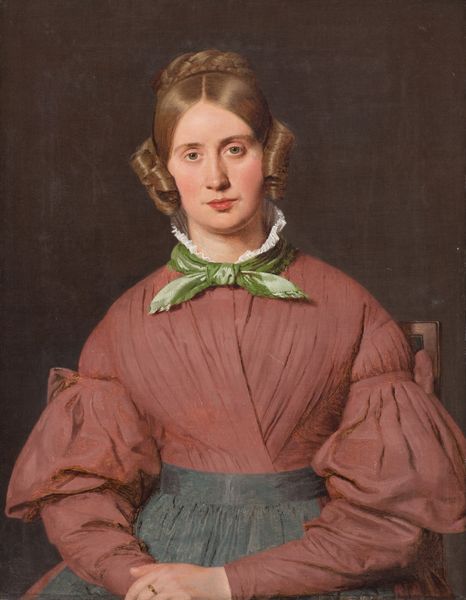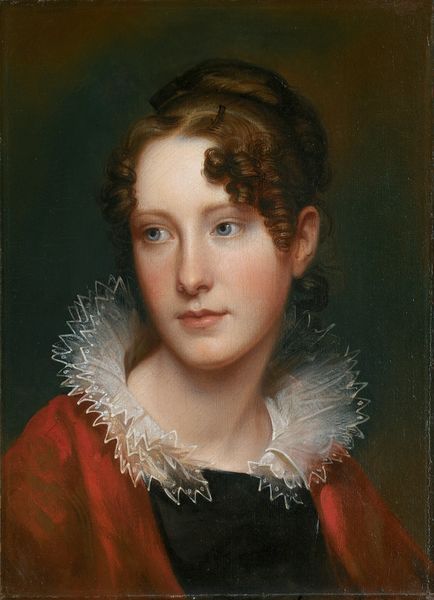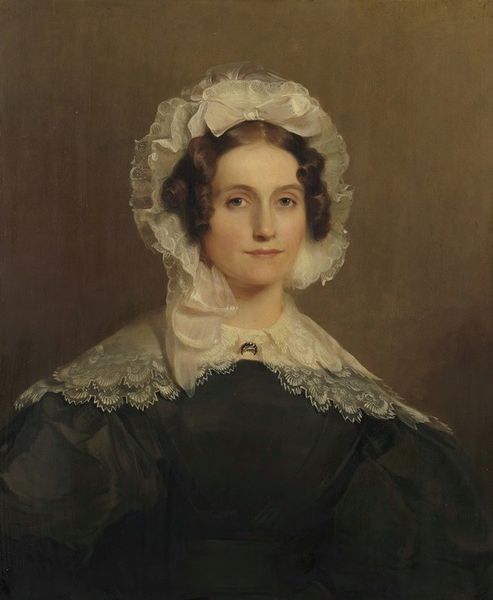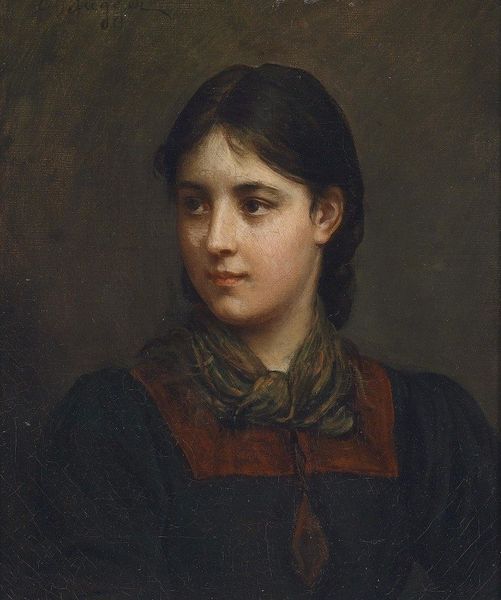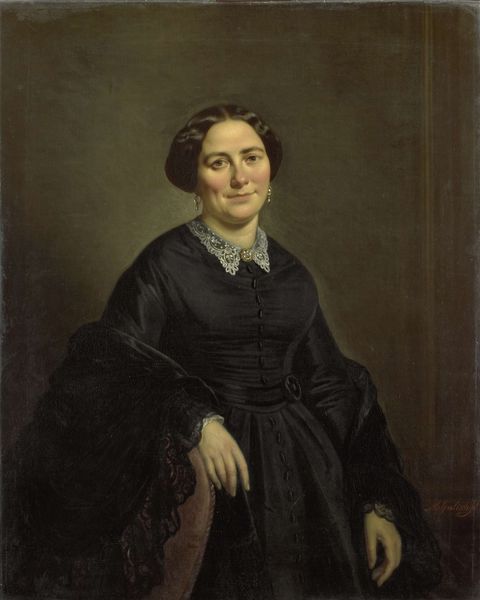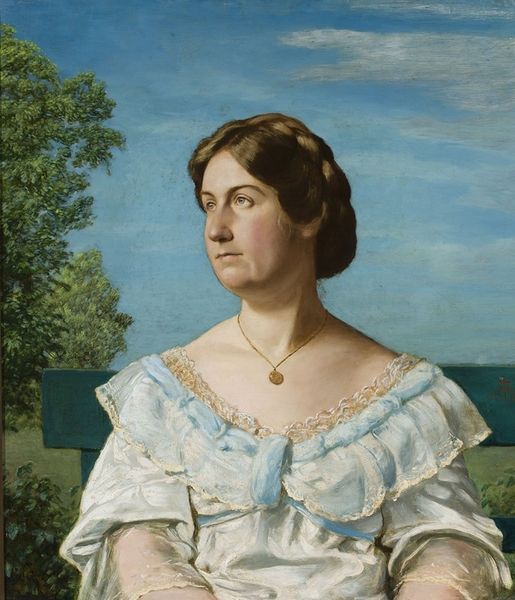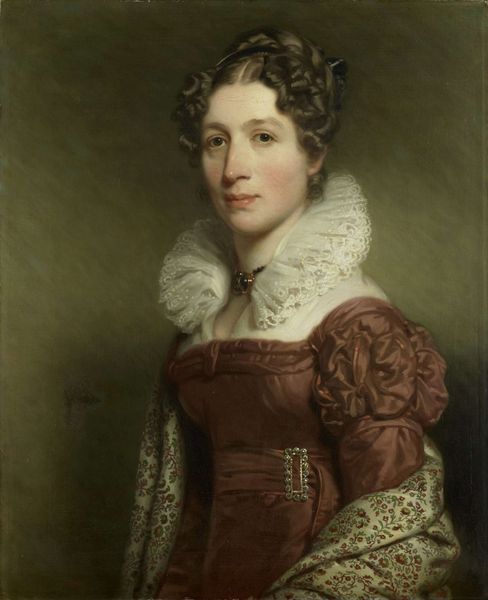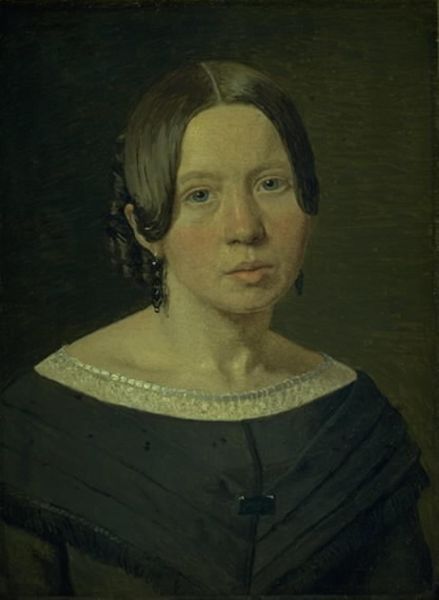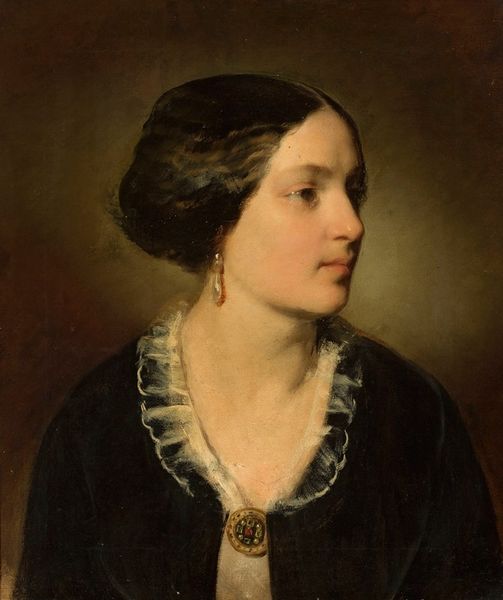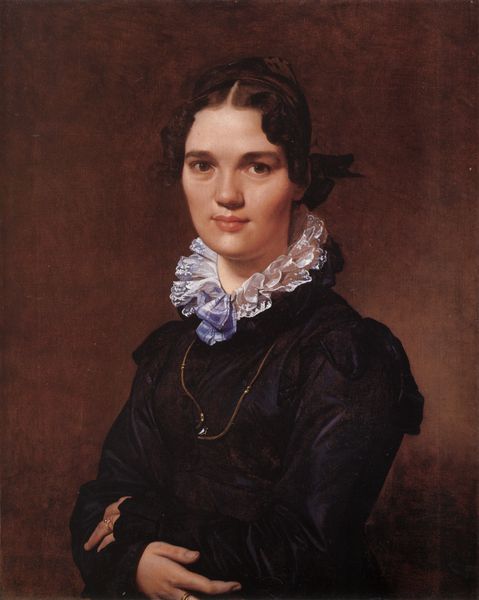
Portrait of Emilie Krohn, née Købke, the Artist´s Sister-in-Law 1836 - 1840
0:00
0:00
painting, oil-paint, canvas
#
portrait
#
self-portrait
#
portrait
#
painting
#
oil-paint
#
canvas
#
romanticism
#
portrait art
Dimensions: 48.4 cm (height) x 42.4 cm (width) (Netto)
Curator: Welcome. Today we're looking at Christen Købke's "Portrait of Emilie Krohn, née Købke, the Artist’s Sister-in-Law," oil on canvas, from approximately 1836 to 1840. Editor: There’s a certain quietness, almost austerity to this work. The subdued palette, the subject’s reserved gaze…it suggests a very particular, perhaps restrained, social milieu. Curator: Precisely. Købke’s formal control is remarkable here. Notice how the pyramidal composition, combined with the soft chiaroscuro, creates a sense of stillness and monumentality. The rendering of textures, from the delicate lace collar to the smooth skin, is quite skillful. Editor: But that lace collar… it’s so precise, almost defiant against the dark background. It feels symbolic, doesn’t it? Perhaps indicative of a constrained domesticity, of women's work within rigid societal roles. The very name itself hints at familial dynamics and expectations. Curator: An astute reading. Structurally, however, it serves to frame the face, drawing our eye to the subject’s expression. Købke uses subtle gradations of tone to model the features, imbuing them with a gentle light, a visual syntax reflecting the values of Romanticism. Editor: I agree there is a gentleness to the portrayal, yet I'm struck by her composure, how she meets the gaze head on. Was painting the women in his life—his mother, his sisters, and sister-in-law—a conscious act on Købke’s part? A way of recognizing women, perhaps providing the historical representation they so often lacked? Curator: Köbke indeed had many other paintings featuring female figures, but whether these images overtly sought to disrupt the norms or simply served as vehicles for artistic experimentation remains open to debate. Nonetheless, the careful design of brushstroke, line, and luminosity work in concert. Editor: It’s tempting to delve deeper, into the cultural tapestry of 19th-century Denmark, to contextualize this “quiet” portrait within the broader currents of class and gender… Curator: And that’s where our interpretations diverge, inevitably enriched by our own position, or approach to understanding an artwork and it’s potential historical interpretation, if we consider our cultural analysis against form. Editor: Which serves to exemplify why it’s a piece that continues to be explored and inspire inquiry, decades after the Romantic period that inspired its formal aesthetics.
Comments
No comments
Be the first to comment and join the conversation on the ultimate creative platform.
